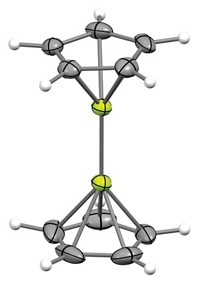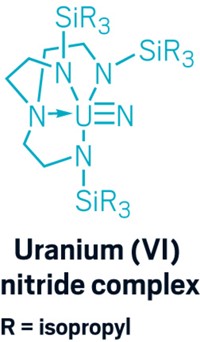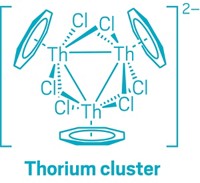Advertisement
Grab your lab coat. Let's get started
Welcome!
Welcome!
Create an account below to get 6 C&EN articles per month, receive newsletters and more - all free.
It seems this is your first time logging in online. Please enter the following information to continue.
As an ACS member you automatically get access to this site. All we need is few more details to create your reading experience.
Not you? Sign in with a different account.
Not you? Sign in with a different account.
ERROR 1
ERROR 1
ERROR 2
ERROR 2
ERROR 2
ERROR 2
ERROR 2
Password and Confirm password must match.
If you have an ACS member number, please enter it here so we can link this account to your membership. (optional)
ERROR 2
ACS values your privacy. By submitting your information, you are gaining access to C&EN and subscribing to our weekly newsletter. We use the information you provide to make your reading experience better, and we will never sell your data to third party members.
Inorganic Chemistry
Transition-metal complex takes on an unexpected hexagonal planar structure
Stable palladium complex has 3 hydrides and 3 magnesium ligands
by Leigh Krietsch Boerner
October 12, 2019
| A version of this story appeared in
Volume 97, Issue 40

The geometries of transition-metal complexes are a small clique. The atoms and ligands in such complexes generally take on only a few structures, such as octahedral, trigonal bipyramidal, and square planar shapes. Scientists proposed a hexagonal planar geometry more than 100 years ago, but it has never been captured in crystal form until now. Mark R. Crimmin and coworkers at Imperial College London nabbed the structure with a complex consisting of a palladium atom surrounded by three hydride and three magnesium-diisopropylphenyl ligands (Nature 2019, DOI: 10.1038/s41586-019-1616-2). Scientists know that hexagonal planar compounds can form in condensed metal phases and in the pores of coordination polymers, but a transition-metal complex with this geometry was a surprise, Crimmin says. “The magnesium ligands accept electron density from the palladium,” and, with this geometry, they interact optimally with palladium's filled d orbitals to stabilize the compound, he adds. “Not only does this species have the potential for interesting reactivity,” says Michael Whittlesey of the University of Bath, but it suggests that combining transition metals with other nonconventional main-group metals may give rise to compounds with unexpected properties.
CORRECTION
This story was updated on Oct. 15, 2019, to correct the statement that the hydrides overlap well with filled palladium d orbitals. The magnesium ligands are what interact with palladium's d orbitals.





Join the conversation
Contact the reporter
Submit a Letter to the Editor for publication
Engage with us on Twitter